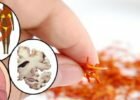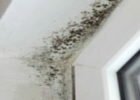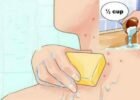Most people tend to choose honey based on price. However, people are extremely confused when it comes to choosing the right type of honey.
Honey is extremely versatile and it can be used to sweeten tea, glazed on a ham, or drizzled on toast or strawberries. However, its uses go far beyond the kitchen as it works as an antibacterial and antifungal agent, ably regulating blood sugar and even reducing ulcers.
As unbelievable as it sounds, archeologists have found a 3,000 year old honey in a tomb which was still edible. But, not all honey is the same, meaning that you need to be extremely cautious when buying some.
According to a recent study, more than 75 percent of store-bought honey was “ultrafiltered”, which removes both impurities and traces of pollen. Although it is pricey and said to improve shelf-life, it turns out that this is far from the truth.
Pollen is the best way to determine the origin of the honey which ultra-filtering actually masks. It is very likely that it comes from China, where honey is cheap and with low quality.
Recently, Chinese honey has become subject to heavy import tariffs due to the presumptions that it is contaminated by heavy metals and illegal antibiotics. Unfortunately, Chinese producers ultra-filter their honey and then sell it on the American market with a sticker Made in the USA”.
To protect yourself, you should take into consideration the following facts:
- 77 percent of honey from stores like Target, Costco, and Sam`s Club, doesn’t have traces of pollen.
- “Winnie the Pooh” honey from Wal-Mart and those types offered at KFC or McDonald`s have no traces of pollen whatsoever.
- Always buy locally as this allows you know the source and prevent seasonal allergies due to the pollen content.
- Manuka honey from New Zealand is the only honey approved by the FDA.
A USDA LABEL DOESN’T MEAN YOUR HONEY IS PURE
Contrary to popular belief, the high price doesn’t mean that the honey you are buying is quality and authentic.
Below you have a few tests which can help you determine whether your honey is real or fake:
1. The match test
Since pure honey is flammable, putting some of it onto a matchstick and lighting it can show whether it is real or fake. If real, it will light easily.
2. The water test
Adding a tablespoon of honey into a glass filled with water is a reliable test showing whether the honey is pure or fake. Real honey sinks to the bottom while fake honey dissolves.
3. The thumb test
Put some honey on the thumb. If the honey stays intact on the thumb, it means that it is pure. On the other hand, if it spread around, it is very likely that it is artificial.
4. The freezer test
Real honey doesn’t freeze!




